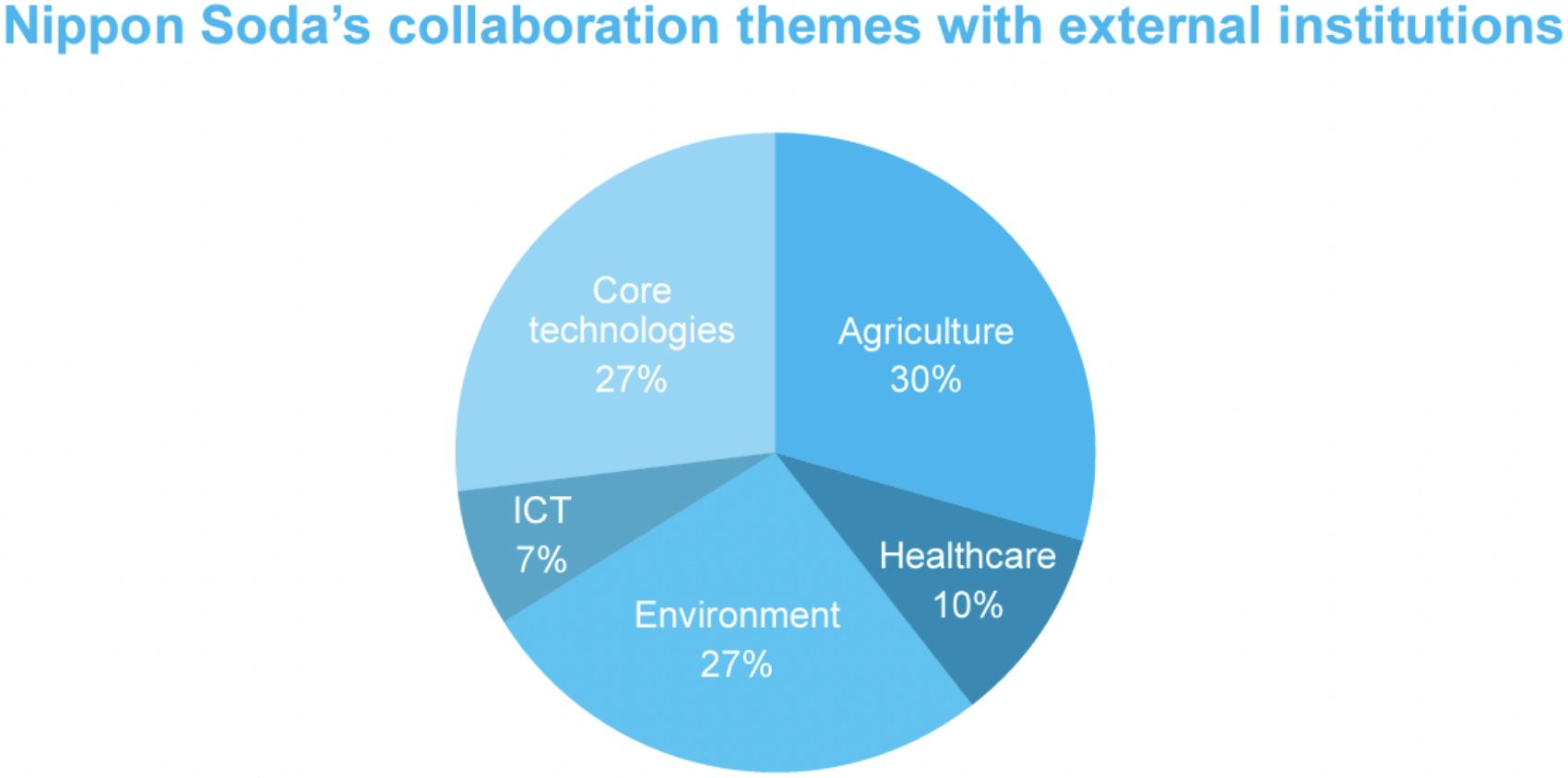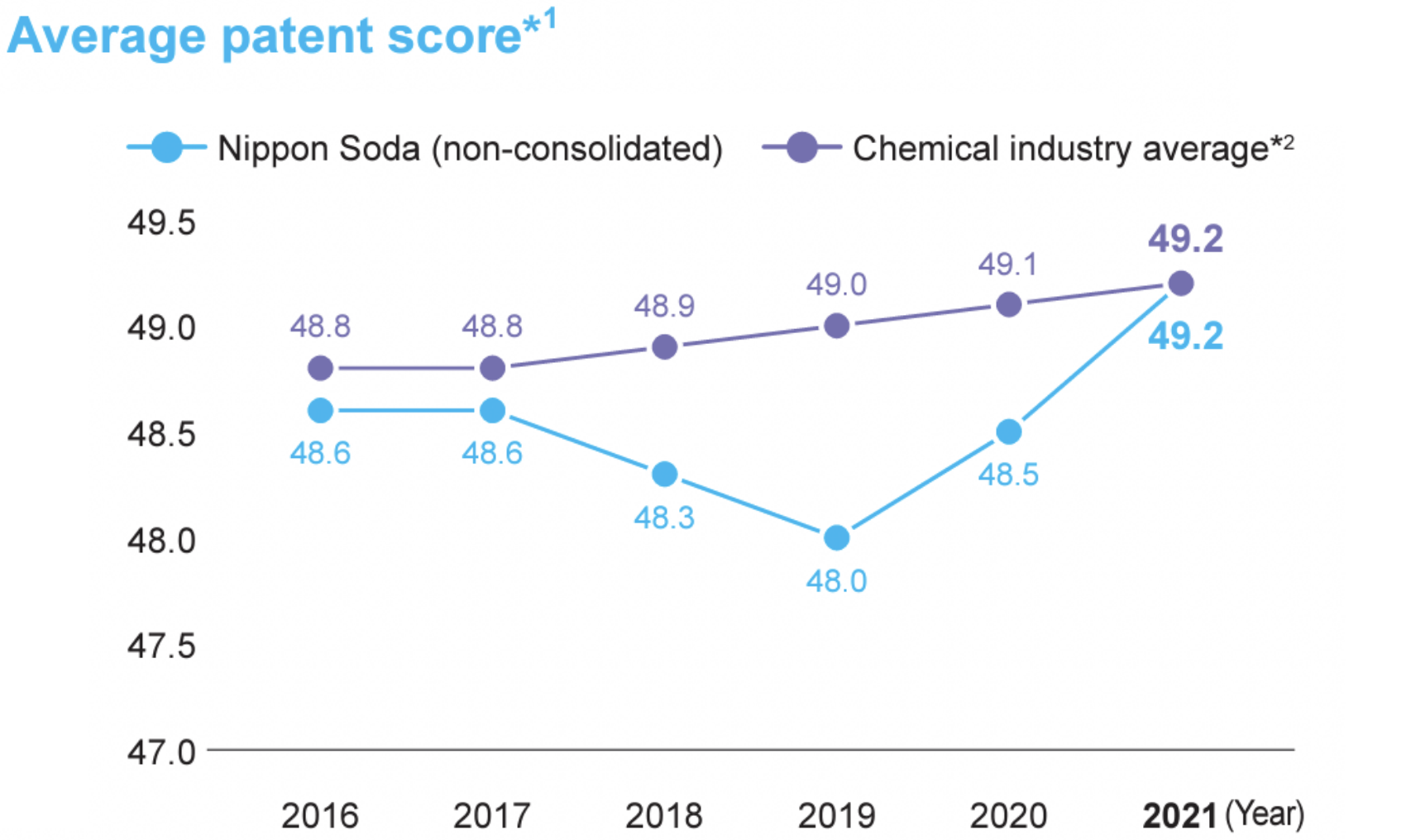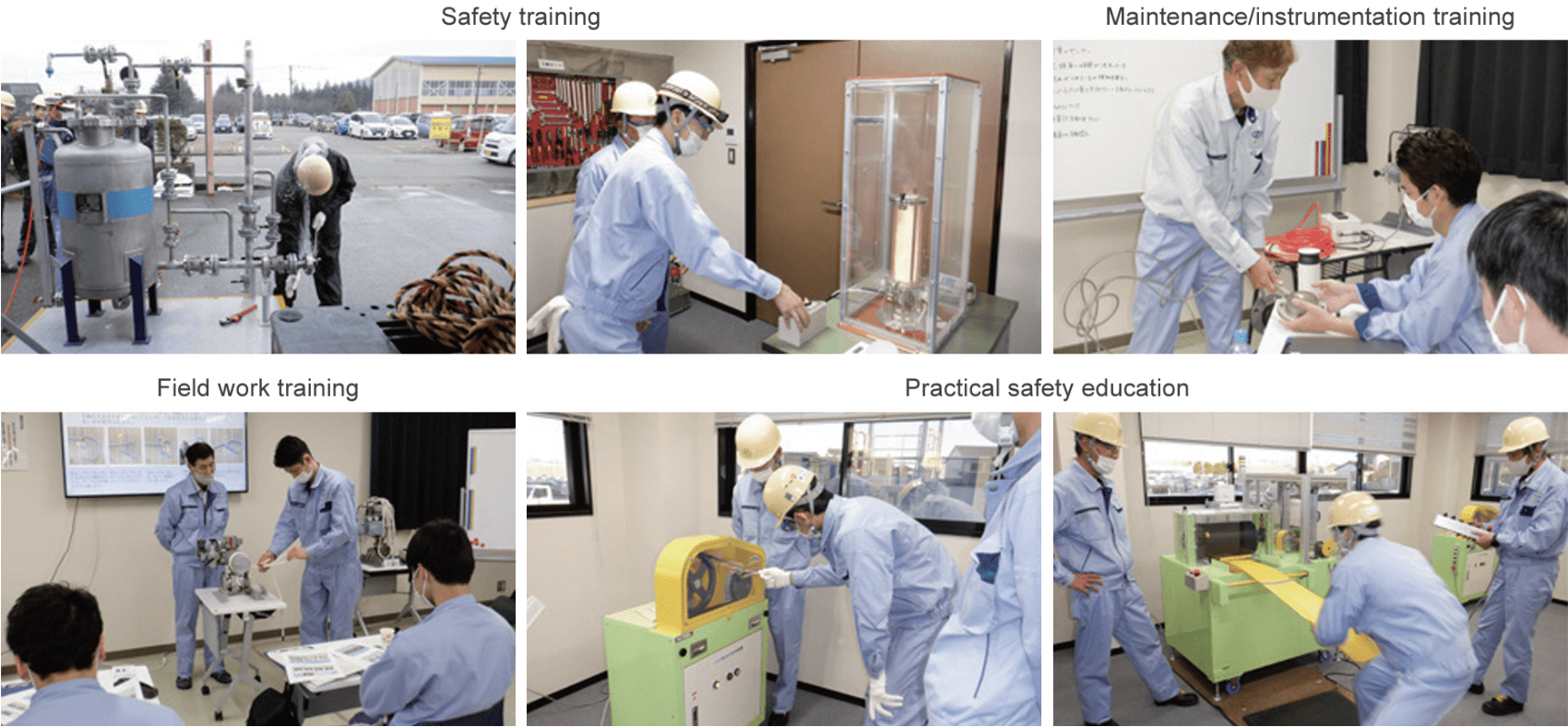Initiatives for the Next Generation
Next-generation Research and Development
At Nippon Soda, we see climate change as one of the key challenges facing society. As such, in addition to the supply of low-carbon products, we are also focusing our attention on hydrogen, a next-generation clean energy source that does not emit CO2 when used and that can contribute to a decarbonized society. Aiming to launch new businesses in this field, on top of internal resources, we are also making use of external collaborations with partners from industry and academia to drive research and development.
SDGs
Materiality
Achieving a low-carbon society
-
01
Contribution by supplying low-carbon products
-
02
Engaging in initiatives aimed at a hydrogen-based society
KPI
① Current initiatives
High-efficiency hydrogen generation electrode using solid-solution alloy nanoparticles
Nippon Soda and Kyoto University became the first to succeed in the synthesis of platinum-tungsten solid-solution alloy nanoparticles. When used in the electrolysis of water, this synthesis technology can generate a hydrogen evolution reaction (HER) that demonstrates the highest level of catalytic activity in the world. The technology makes use of Nippon Soda’s metal particulation and dispersion technologies. Moreover, the results of this joint industry-academia research project were published in the Journal of the American Chemical Society, and received wide acclaim from external circles.
Development of a new porous material with Rikkyo University
As part of an industry-academia project with Rikkyo University, we are developing a new metal organic framework (MOF), which is a functional porous material. As MOFs can store hydrogen gas, we are planning to apply them to safe hydrogen gas storage materials, while we also believe they could help to spread and promote hydrogen fuel cell vehicles.
Materiality
Forming partnerships to achieve goals that cannot be accomplished by the Nippon Soda Group alone
-
01
Sharing philosophies for the goals and cooperating with other companies and organizations
KPI
① Current initiatives
To strengthen and expand our existing businesses, and to create new businesses, it is essential that we engage in open innovation to make use of external research resources and technologies in addition to our own. As such, we are promoting R&D through collaboration with external institutions in industrial and academic circles.

In FY 2022, we worked with 21 external research institutes (including 19 universities) to promote a range of R&D themes.
Materiality
Research and development for the next generation
-
01
Research and development that enables the continuing development of human society and the global environment, and that leads to business
KPI
① Status of research and development
The Nippon Soda Group has positioned agriculture, healthcare, the environment, and ICT as its four key fields of activity, and is aiming to create new businesses in these fields to tackle the issues facing society. We will thus work to invent technologies that lead to high-added-value products and services and apply for patents both in Japan and abroad. Further, by arranging our patented technologies in line with their level of use, we will seek to optimize and raise the quality of our patent portfolio.

Data aggregation period: December 31 each year
- *1 Patent scores are numerical indicators of the level of attention a patent receives. The higher the patent score, the higher its market profile. Further, the higher the average score of a patent portfolio, the higher the quality of said portfolio. Average patent scores have been calculated using Biz Cruncher, a program offered by Patent Result Co., Ltd.
- *2 Chemical industry averages have been calculated based on the 80 companies listed on the Tokyo Stock Exchange under the Chemicals sector (one of the 33 sectors on the TSE).
Manufacturing training programs with emphasis on experiential learning
Aiming to transfer technologies and develop employees who can maintain the safety and high productivity of manufacturing workplaces, in FY 2016 we launched the Nisso Takaoka Academy at the Takaoka Plant to provide systematic training programs for newly employed manufacturing personnel. Training is mainly provided to personnel newly employed at all Group companies in Japan.
The emphasis of the training is on experiential learning. With their safety assured, participants can experience falling from a high place, encounter water and gas leaks resulting from loose bolts, and come up against other situations that they cannot experience from desk-based learning. Participants are provided with opportunities to experience simulated risks and failures that would not be possible during on-the-job training. The valuable experience they gain through these programs helps increase their awareness of the need for accuracy and safety in their work, which can then be applied to their activities in the workplace.
In FY 2020, we commenced a series of manufacturing training programs with emphasis on experiential learning. These programs were part of a two-year plan to expand educational facilities and increase equipment used for safety education. In April 2021, we established the Nisso Technical Training Center. To further enhance safety awareness, we will provide experiential safety education to other employees in addition to newly employed manufacturing personnel.
Materiality
Developing human resources for the next generation
-
01
Educational system to foster a culture of safety for the future
KPI
① Training initiatives
Manufacturing training programs
In FY 2022, the programs were implemented on a limited basis while adjusting times and numbers of participants to prevent the spread of COVID-19.
- July 19–29, 2021: Takaoka Plant (practice) No. of participants: 17
- August 18–24, 2021 (temporarily cancelled due to the state of infections)
October 4–10, 2021: Takaoka Plant (first-year training) No. of participants: 6 - October 19–28, 2021: Takaoka Plant (second-year training) No. of participants: 5
- November 15–19, 2021: Nihongi Plant (first-year training) No. of participants: 6
- December 6–10, 2021: Nihongi Plant (second-year training [1]) No. of participants: 4
- December 13–17, 2021: Nihongi Plant (second-year training [2]) No. of participants: 5
Main training programs for safety
- Safety training: Special safety education for oxygen deficiency, concrete methods related to the four safety cycles, how to handle steam, operation of forklifts, how to handle organic solvents, experience with solvent combustion explosions due to static electricity, experience with exposure to liquid chemicals, and how to handle breathing equipment
- Maintenance/instrumentation training: Machine maintenance, how to read engineering flow design (EFD), electricity, instrumentation/measuring, and how to handle electric tools
- Field work training: How to use tools/instruments correctly, installation/removal of flanges, testing airtightness of pipes, and plumbing assembly/removal
- Practical safety education: simulation of hazards associated with working at heights, slinging work, rotating machines, electricity, and more
Objective of the session
To acquire basic knowledge and learn about basic machine structure to improve safety awareness.



